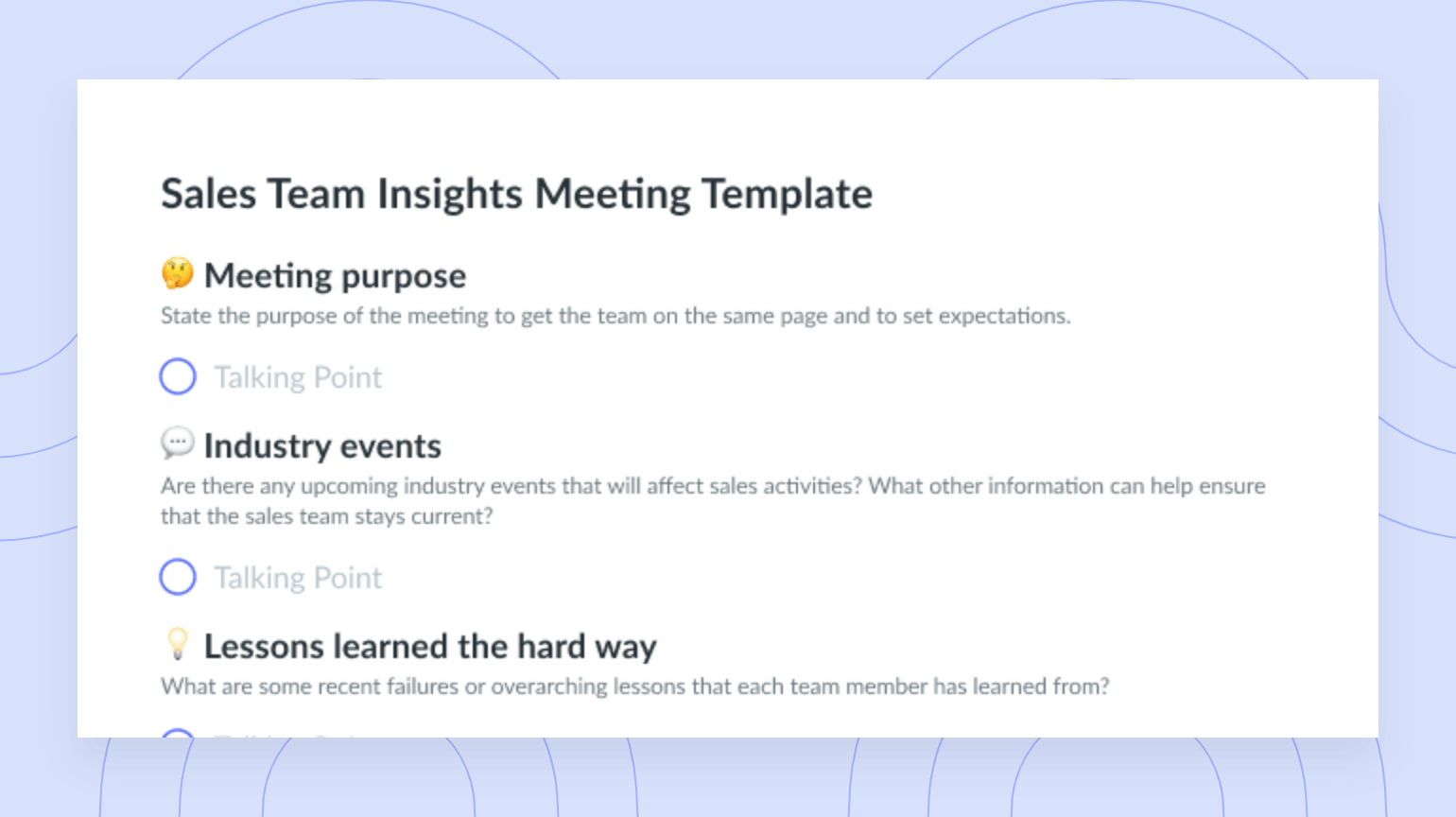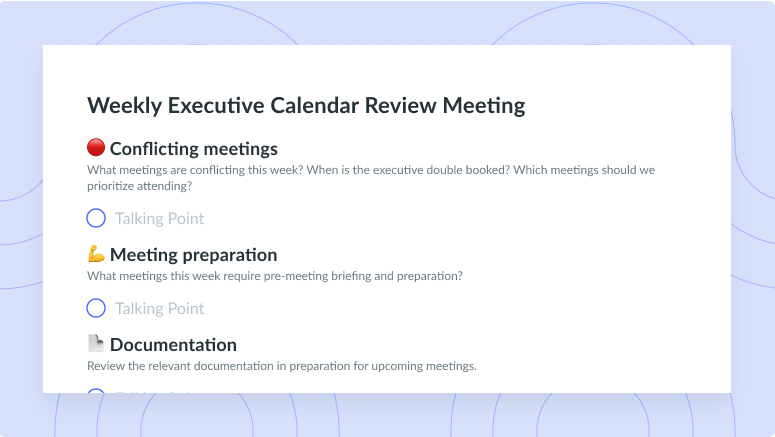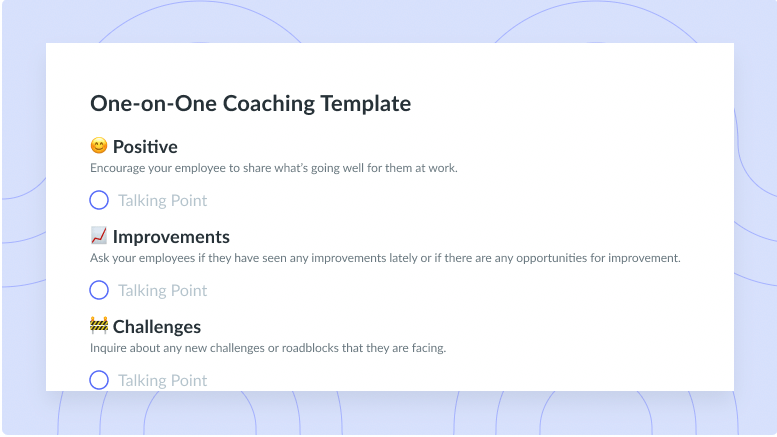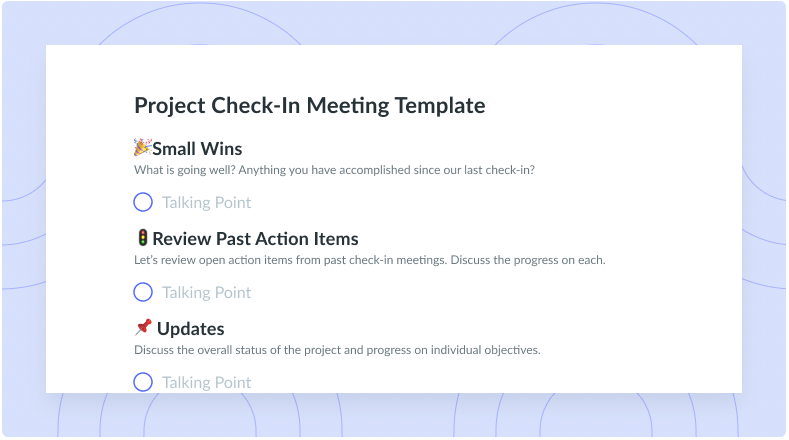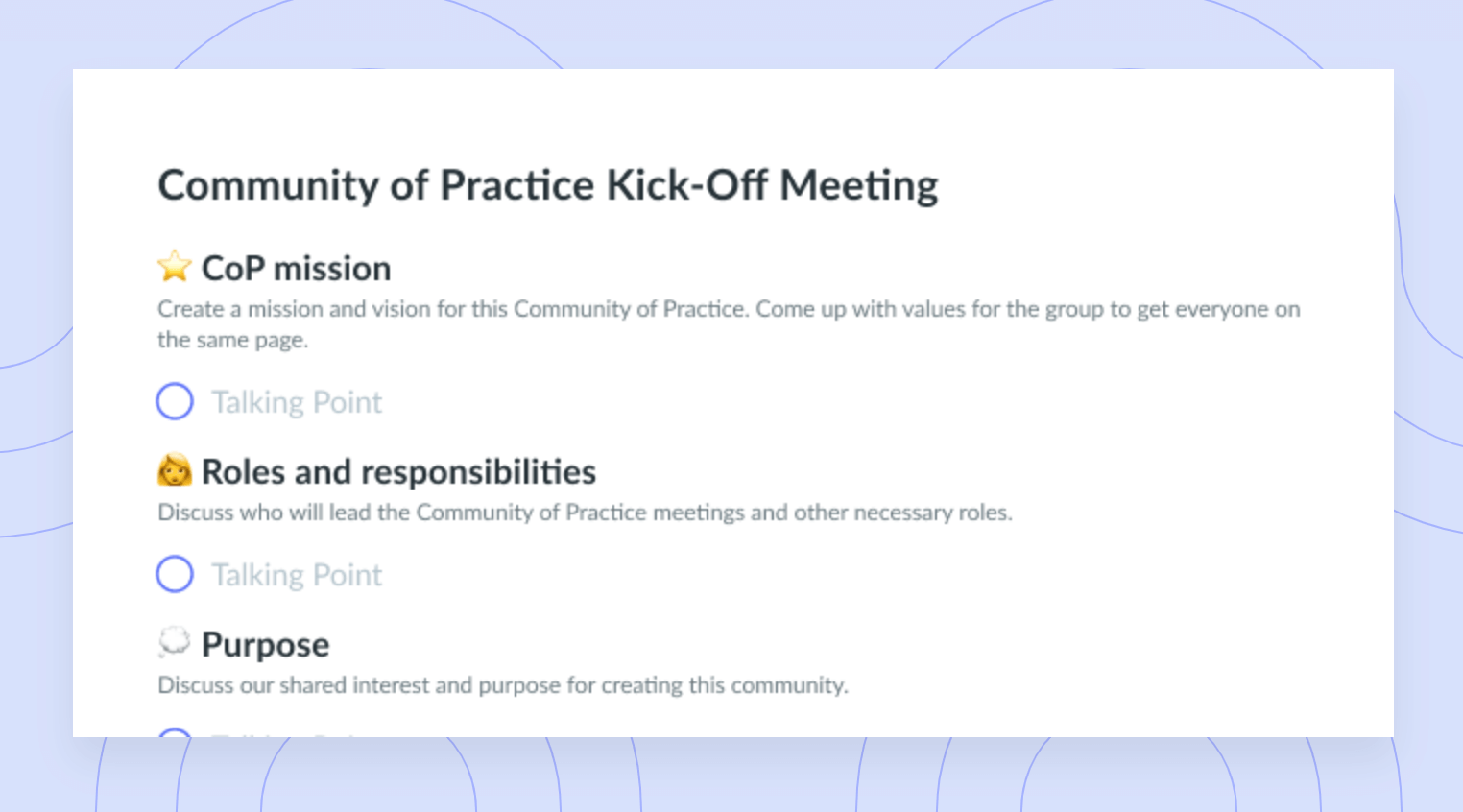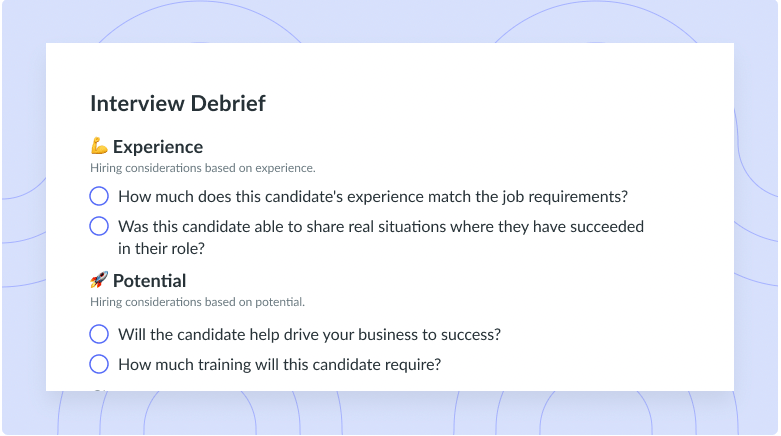The 7 Best Employee Retention Strategies in 2024
Losing talented employees can be costly to an organization. Discover the top retention strategies to keep your team productive and motivated.
When you find top-tier talent, you want to keep these sharp minds on your team for the long haul. Companies with good retention strategies know that managing attrition (losing team members) is key to organizational success.
If you want your business to grow, you need a team excited for the journey ahead, and strong retention strategies are one way forward. Read on to learn why retention programs matter and find helpful strategies to increase employee retention.
- What is employee retention and why is it important?
- Common reasons employees leave their jobs
- What is the real cost of losing an employee?
- 7 effective employee retention strategies
- Continuously improving with Fellow
What is employee retention and why is it important?
Employee retention is a metric that measures how long your team members work for your organization. When you’re trying to figure out whether your team members prefer to stay long-term or leave for greener pastures, look at your retention rate.
Don’t fret if you don’t have a 100 percent retention rate—that’s rare. Team members take new paths in their careers all the time, often for reasons unrelated to their current organization. That said, constantly high employee turnover is a red flag you shouldn’t ignore.
Investing in employee retention is a must if you want to keep hiring costs down and avoid productivity disruptions. Prioritizing retention often boosts morale across your organization, too, and that’s a big part of both retaining current team members and attracting new talent.

Promote a culture of asking for employee feedback
Research shows employees who receive consistent feedback feel more fulfilled in their jobs. With Fellow, you can incorporate feedback into your team’s day-to-day experience and track progress over time.
Common reasons employees leave their jobs
If you’re noticing high retention rates, your team members might be:
- Craving a stimulating challenge
- Seeking recognition and value
- Exploring opportunities for job growth and career advancement
- Pursuing increased compensation
- Interested in a different field
- Experiencing frustrations around workload and efficiency
1Craving a stimulating challenge
Team members with high ambition might not feel satisfied if they’re doing the same thing every day. When they’re not able to flex their creativity and learn new skills, they might start looking for an organization that makes this possible.
2Seeking recognition and value
Underappreciated team members lose motivation quickly, so it’s important to communicate how much their work matters. Fellow’s templates, such as the Herzberg’s Motivation-Hygiene Theory template, can help you evaluate and understand what motivates team members so you can give them more meaningful work.
3Exploring opportunities for job growth and career advancement
Are you asking potential team members about their five-year plans during the hiring process? If so, show that your organization can be part of that plan—and if not, start asking about this in every job interview. People often want to stay with organizations with plenty of opportunities for promotions and professional development, and you can provide exactly that.
4Pursuing increased compensation
At the end of the day, everyone has to earn a living. If you’re not offering salaries that pay your team members what they’re worth, it’ll be hard to keep them around long-term.
5Interested in a different field
Sometimes, it’s not about your organization. Often, a team member develops an interest in a new field outside their current role. You can still retain top talent who want to make a career change, though—give these folks professional development opportunities beyond their current responsibilities. If a sales manager is curious about how to code, they’re more likely to stick around if you nurture their new passion.
6Experiencing frustrations around workload and efficiency
It doesn’t matter how passionate someone is about your organization’s mission. If it’s hard to get things done daily or there’s a lot of tedious work, the desire to stay might disappear. Prioritizing effective processes and automating tasks in the workplace can free up team members for more exciting work. With Fellow’s AI Meeting Copilot, your team members can stay engaged and productive during and after meetings by automatically transcribing, recording, and summarizing your meetings, all in one place.
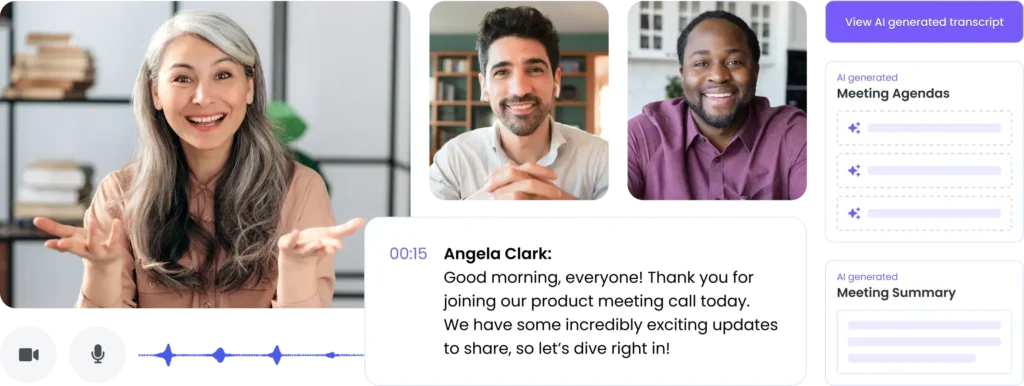
What is the real cost of losing an employee?
Team members leaving causes more than workflow changes—there are also dollars on the line.
1Recruitment costs
It can cost thousands of dollars just to hire one new team member. Multiply that by your turnover rate, and you can see how the price of losing good talent adds up quickly. Plus, the recruitment process eats into your and your team’s time—posting job openings, reviewing resumes, and interviewing candidates takes up lots of time and money that could be better spent on other tasks.
2Onboarding and training costs
The price of getting a new hire up to speed can also run into the thousands. On top of that, training is an ongoing process that takes months, with that time increasing for senior roles. Plus, every organization has tacit knowledge that might not fit neatly into a training session and must be learned on the job. Training a new team member in these areas can be difficult, but it certainly impacts your success.
3Lost productivity
The cost of employee turnover affects your entire team when you consider the disruptions in workflow. No part of your team operates in a vacuum, so resignations can throw a wrench in projects and processes. Low retention can also negatively affect everyone’s morale and performance—team members who see people leaving all the time are more likely to lose motivation.
7 effective employee retention strategies
The good news is that low retention rates are pretty easy to turn around. Here’s how.
- Create an affirming organizational culture
- Set transparent expectations
- Prioritize continuous professional growth
- Identify improvement areas
- Involve every team
- Offer competitive salaries and benefits
- Celebrate achievements and milestones
1Create an affirming organizational culture
Positive work environments attract team members with positive attitudes, so cultivating a supportive company culture is one of the best ways to boost employee retention. Your organization can cultivate this atmosphere in all kinds of ways. Prioritizing work-life balance, for example, gives team members the energy to thrive in their roles.
Giving everyone a seat at the table is also important, so make space for your team to offer continuous feedback. When your team members offer actionable solutions, follow through on their suggestions.
2Set transparent expectations
Team members can’t meet their goals if they don’t know what you expect. If anything, open, transparent communication is the most important part of ensuring your team performs at its best. Make sure your team members are clear on their responsibilities, and create space for them to ask questions. Use Fellow’s OKR tools to easily create and track objectives and key results for the organization, a team, or an individual.
3Prioritize continuous professional growth
If you want team members to grow with your organization, you need to give them the tools to flourish. That’s why one of the best talent development tips is to create learning opportunities on an ongoing basis. After all, professional learning—building leadership skills and expanding technical knowledge, for instance—is a career-long process for everyone from entry-level team members to upper management.
4Identify improvement areas
When looking to increase employee satisfaction, you need to find the root of the issue first. If team members tell you about challenges they’re facing, listen to them, then follow up with actionable next steps. If you’re unsure which areas warrant concern, use Fellow’s customizable employee retention meeting template to get to the bottom of things. You can drill down on common factors that affect retention, such as leadership relationships, and come up with a plan for addressing obstacles.
5Involve every team
Boosting retention isn’t one person’s job alone. It takes a collective effort to build a thriving workplace.
If your HR team has proposed a plan for improving retention, it needs buy-in and participation from senior leadership. But it’s not just managers and C-suite employees—every team member plays a role in contributing to a positive work environment. A team full of smiling, happy faces leads to a much better culture than a drained, bitter group.
6Offer competitive salaries and benefits
Are you paying your team members more, the same, or less than other organizations in your field? Your answer may show you why you’re struggling to retain employees.
Keep your finger on the pulse of current salaries in your industry to see what it truly means to offer competitive salaries and benefits. Paying below market levels is a surefire way to send your best talent running toward competitors who pay more.
7Celebrate achievements and milestones
Constructive feedback is essential for employees to grow, but telling your team when they’re doing great work is just as important. Be vocal when team members reach their goals, and celebrate when they go above and beyond.
Employee recognition and rewards are a great way to shout out hard work and let the rest of your team know about someone’s recent accomplishments. When other team members join in on the celebration, a positive work culture is all but guaranteed. That kind of culture is itself, of course, a great way to keep team members around.
Continuously improving with Fellow
Fellow gives your team the tools to create a work culture that keeps employees happy. From AI meeting transcriptions and summaries that save them time to feedback tools that empower them to feel seen and heard, Fellow can help you improve your employees’ day-to-day. For everything from talent management framework meetings to HR and leadership meetings, Fellow’s meeting agenda templates help you streamline big-picture retention strategies and daily needs. Explore Fellow’s features today and watch your team members’ happiness—and productivity—soar.




![How to Write a Meeting Recap [With Templates]](https://fellow.app/wp-content/uploads/2021/02/Meeting-Recaps.jpg)






![25 Military Leadership Quotes to Try [+ Free Template]](https://fellow.app/wp-content/uploads/2022/05/Military-Leadership-Quote.jpg)
